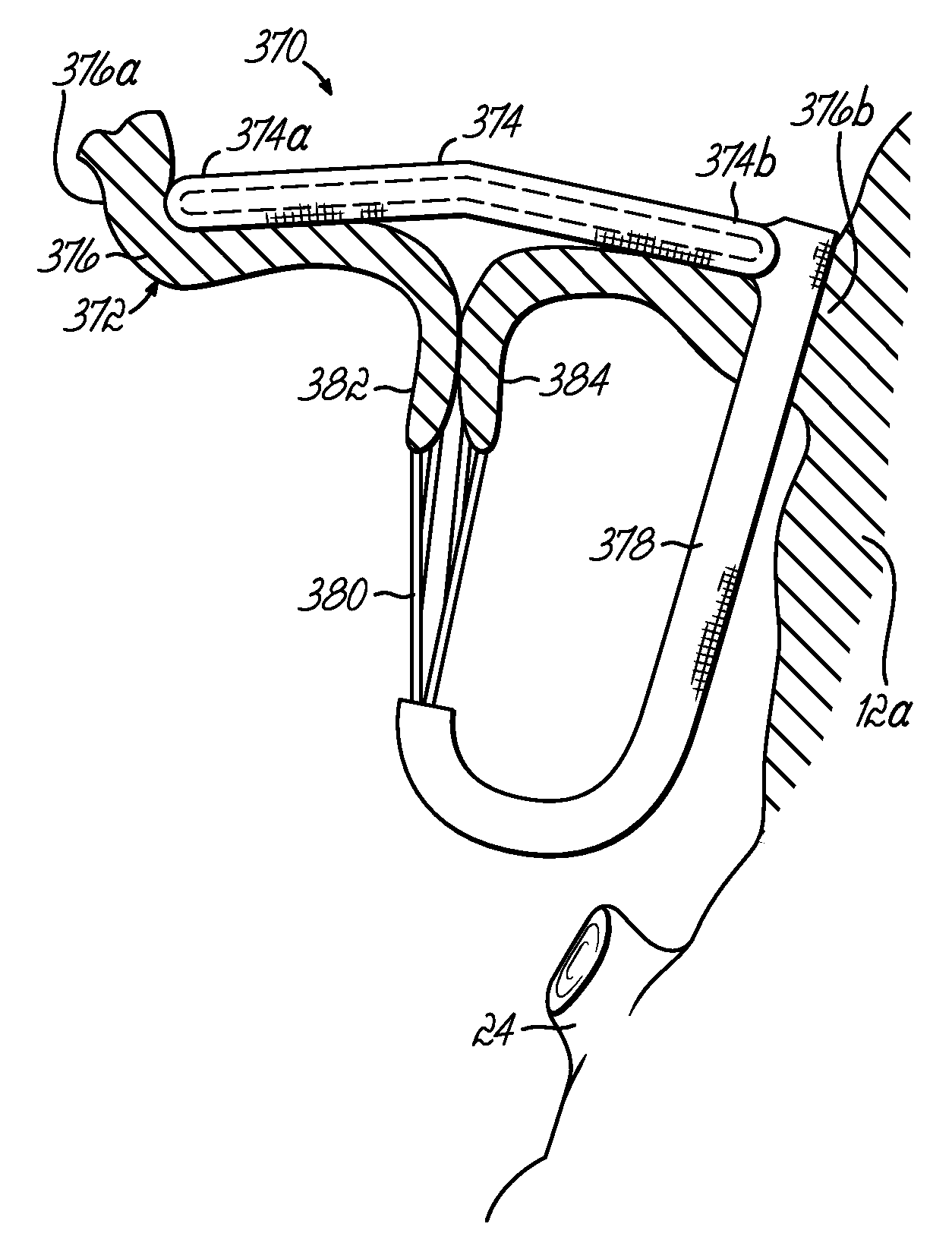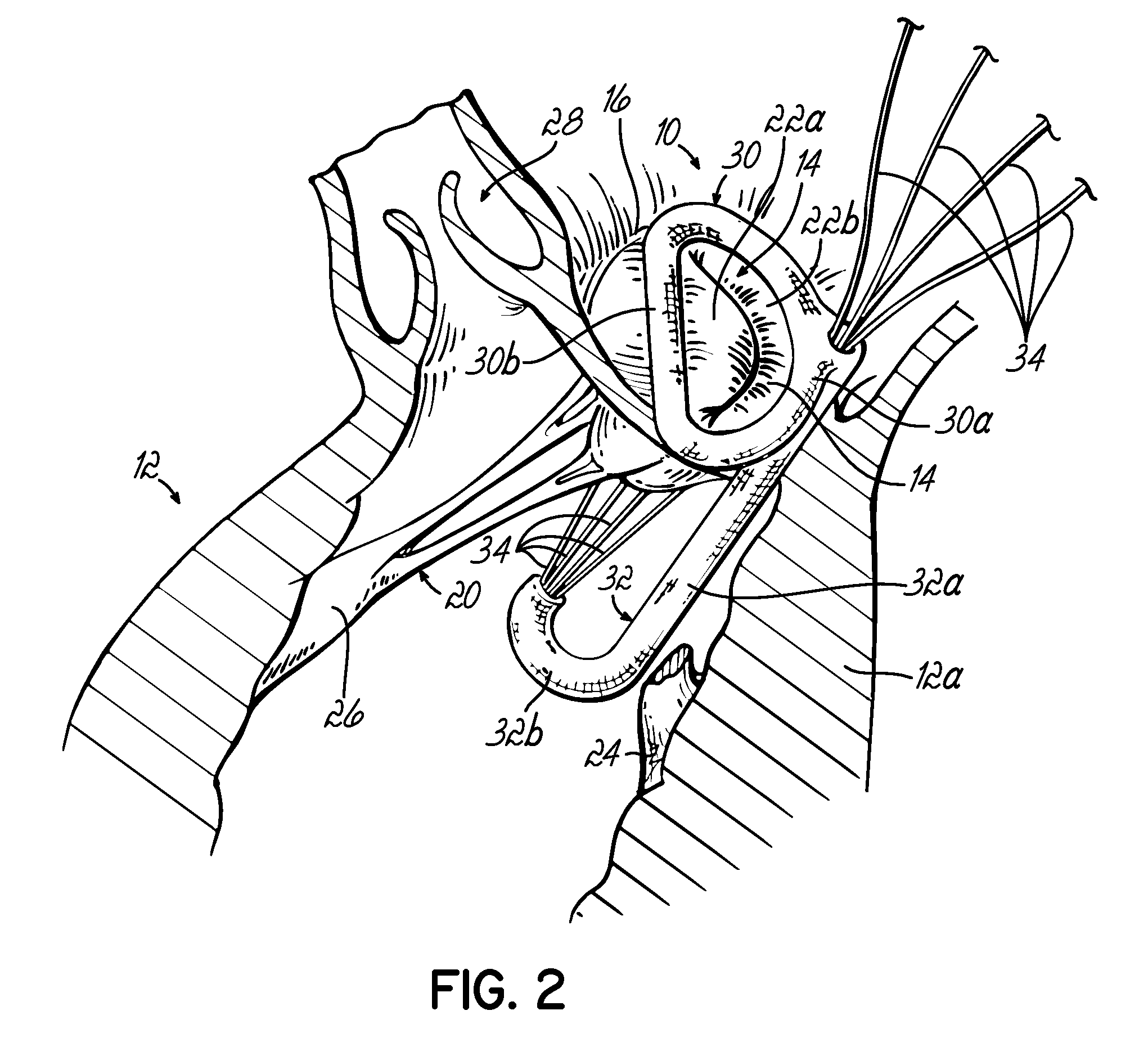Heart valve repair apparatus and methods
a heart valve and apparatus technology, applied in the field of repair and replacement of heart valves, can solve the problems of chords bursting, small safety margin, constant change of the attachment distance of leaflet edges, etc., and achieve the effects of improving the function of left ventricular, preventing bulging of the posterior wall of the heart, and being reliable and permanen
- Summary
- Abstract
- Description
- Claims
- Application Information
AI Technical Summary
Benefits of technology
Problems solved by technology
Method used
Image
Examples
Embodiment Construction
[0054]Referring first to FIG. 1, a device 10 for supporting a heart valve in a patient is shown. In the illustrated example, the left ventricle 12 of a patient's heart is shown in cross section with a mitral valve 14 for supplying blood into the ventricle 12. Mitral valve 14 includes an annulus 16 generally lying in a plane and a plurality of native chordae tendonae or chords 18, 20 respectively connected with a pair of valve leaflets 22a, 22b at one end and papillary muscles 24, 26 at an opposite end. In a normally functioning heart, chords 18, 20 support the anterior valve leaflet 22a and posterior valve leaflet 22b between open (diastolic) and closed (systolic) positions to selectively allow and prevent blood flow into and out of left ventricle 12. Blood enters left ventricle 12 through mitral valve 14 and is expelled during the subsequent contraction of the heart muscle through aortic valve 28. It will be appreciated that the present invention is applicable to heart valves other...
PUM
 Login to View More
Login to View More Abstract
Description
Claims
Application Information
 Login to View More
Login to View More - R&D
- Intellectual Property
- Life Sciences
- Materials
- Tech Scout
- Unparalleled Data Quality
- Higher Quality Content
- 60% Fewer Hallucinations
Browse by: Latest US Patents, China's latest patents, Technical Efficacy Thesaurus, Application Domain, Technology Topic, Popular Technical Reports.
© 2025 PatSnap. All rights reserved.Legal|Privacy policy|Modern Slavery Act Transparency Statement|Sitemap|About US| Contact US: help@patsnap.com



